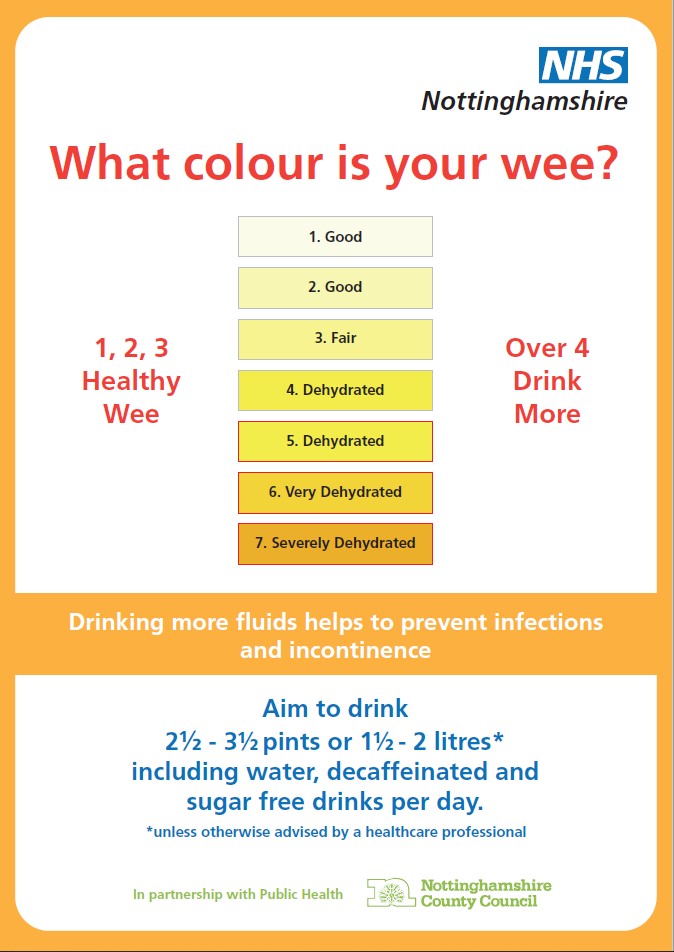Getting Infection Right First Time
7. Getting Infection Right First Time
Click on the objects in the scene to find out more about getting infection right first time.
Getting Infection Right First Time
HELM Open RLO Privacy Settings
The University of Nottingham's Health E-Learning and Media Team collects and holds some personal information about how you use our RLOs when you visit us.
In order to get the most out of this resource, please accept the use of cookies and LocalStorage within this resource's User Privacy Settings
Getting Infection Right First Time
Click on the objects in the scene to find out more about getting infection right first time.
Transcript
Narrator
Bacteria in the urine does not always mean an infection is present.
In older people bacteria can live harmlessly in the bladder without causing any problems, this is not an infection the bacteria are not causing any harm to the person. And treating with antibiotics does not reduce future infections. This is called asymptomatic bacteriuria.
So what proportion of older people does this affect?
Studies of shown that up to 40% of older man, 50% of older women and 100% of people with long-term urinary catheters have bacteria in their urine without signs or symptoms of an infection being present.
Asymptomatic bacteriuria in older people does not require treatment with antibiotics.
And in fact, antibiotics may cause harmful effects.
Urine dipsticks are no longer recommended in the diagnosis of suspected UTI in older people. Why is this? Dipsticks cannot tell the difference between bacteria that are causing an acute infection and those living in the urine harmlessly.
When any bacteria are present in the urine, the dipstick will usually be positive for Nitrites and Leucocyte Esterase. There may also be other markers such as protein and glucose which are unrelated to infection but are often present in older people for other reasons. But none of the markers tell us whether or not that there may be a urinary tract infection that may require antibiotics? For this a clinical assessment for signs and symptoms and the national best practice guidelines support this approach.
But what’s the harm in dipsticking? It is very difficult to ignore a positive result even if it doesn’t mean very much at all it can be difficult to assess older people for example if they are confused, and relying on the urine dipstick result in this setting may result in another diagnosis being missed. It can also trigger antibiotics being prescribed. Antibiotics are powerful and precious drugs.
Giving an older person antibiotics when they don’t need them can lead to side effects such as rashes, stomach upsets or drug interactions. Clostridium difficile diarrhoea or C.diff, is a life threatening infection of the bowl caused by antibiotics.
You may have heard of antibiotic resistance, this happens when bacteria are exposed to an antibiotic and then adapt. So, they are no longer killed by that antibiotic. This means that antibiotics may not work in the future if the person really does need them, in fact many older people, treated with antibiotics for asymptomatic bacteriuria will suffer some type of side effect.
So, it is important to only use antibiotics when there is clinical evidence that there is an infection rather than using the urine dipstick to guide clinical decision making.
Produced by and used with the permission of Health Education England
Symptoms and signs of lower UTI/cystitis
OR two or more:
| Urine Analysis Further Information | |||
|---|---|---|---|
| White Blood Cells | 416 | /uL | (0-40) HIGH |
| Red Blood Cells | 12 | /uL | (0-40) |
| Epithelial Cells | 23 | /uL | (0-55) |
| Culture | 1) | |
|---|---|---|
| Co-amoxiclav | R |
| Cefalexin | S | |
| Ciprofloxacin | S | |
| Fosfomycin | S | |
| Pivmecillinam | S | |
| Nitrofurantoin | S | |
| Piptazobactam | S | |
| Trimethoprim | R | |
Pyuria (the presence of pus in the urine) does not distinguish between asymptomatic bacteriuria and true urinary tract infection. A raised epithelial cell count may indicate the sample has been contaminated with perineal organisms. If the patient has symptoms of a UTI, a repeated well-taken midstream urine should be sent for culture.
Dark or smelly urine is often assumed to be due to infection, however on their own these signs are not predictive of a UTI and are more likely to suggest dehydration.

